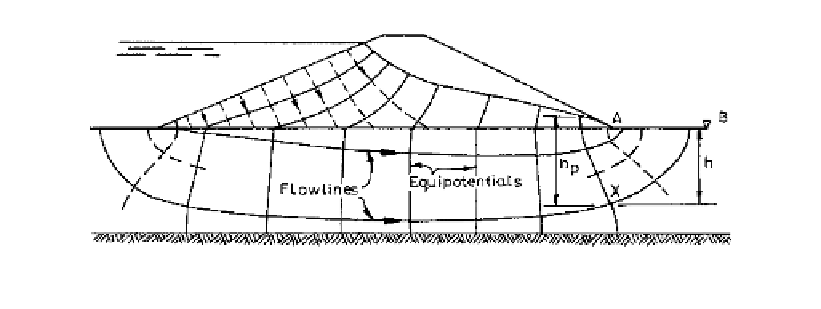Environmental Engineering Reference
In-Depth Information
Figure 10.9.
Locations downstream of a homogeneous dam where blowup may occur.
10.3.3
Prevention of “blowup”, “boiling” or “liquefaction” of the foundation
If seepage water emerges at too high a gradient from downstream of the toe of a dam on
alluvial foundations, “blowup”, “boiling” or “liquefaction” of the toe can occur with the
possibility of:
- Loss of shear strength, leading to slope instability;
- Potential for development of piping failure.
Figure 10.9 shows the area (A-B) which is susceptible. Figure 11.13 shows another sit-
uation where “blow-up” is likely to occur - where a low permeability layer in the foun-
dation confines the seepage flow.
The mechanism involved is one of the high pore pressure in the foundation leading to low
effective stresses, with “liquefaction” or “blow-up” occurring when the effective stress
becomes zero.
The factor of safety against this occurring can be calculated in two ways for Point X in
Figure 10.9, the first being:
either
v
F
(10.3)
UT
u
total vertical stress at any point in the foundation - kN/m
2
Where
v
pore pressure at the same point - kN/m
2
u
or
h
h
sat
F
(10.4)
UT
pw
unit weight of saturated foundation soil - kN/m
3
where
sat
unit weight of water - kN/m
3
w
piezometric head - metres
The factor of safety against blowup calculated in this manner should be compatible
with the consequences of failure and degree of certainty of predicting pressures. However
it should be at least 1.5, with pore pressures calculated conservatively (Cedergren, 1972).
The alternative method for estimating the factor of safety is to consider the gradient of
the flownet. If the gradient approaches unity, liquefaction can be expected to occur. The
h
p



